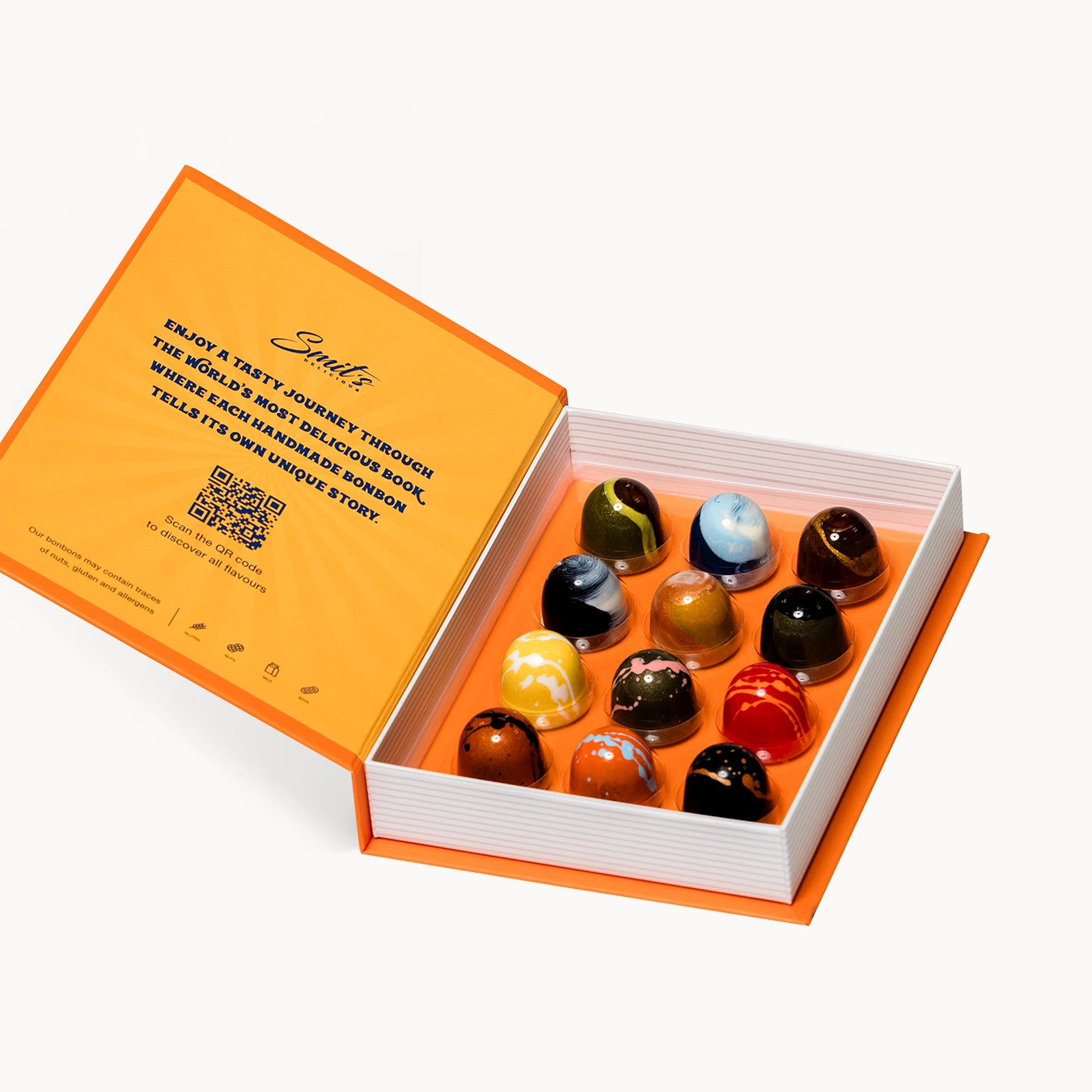Chocolate is a beloved gift to give and receive, even across borders. But how do you ensure your carefully selected bonbons or chocolate bars arrive in perfect condition? In this blog post, we'll give you all the tips and considerations for sending chocolate abroad.
1. Choose the right chocolate
Not all chocolate is equally suitable for shipping. Dark chocolate melts less quickly than milk chocolate and white chocolate because it has a higher cocoa content and less milk fat. Chocolates with a firm filling (such as praline or nuts) are often more resistant to temperature fluctuations than chocolates with a soft, creamy center.
2. Take into account the climate of the destination country
Are you shipping chocolate to a tropical country or a region with high temperatures? Then extra protection is necessary. Use insulated packaging and, if possible, add a cooling element to prevent melting. In winter, the opposite can happen: extreme cold can affect the structure of the chocolate and cause a white haze (cocoa buttercup).
3. Wrap the chocolate well
Sturdy packaging is essential to prevent breakage and damage. Use a sturdy box with shock-absorbing material like bubble wrap or paper. Make sure the chocolate doesn't move around too much in the packaging to minimize the risk of damage.
4. Choose a fast shipping method
The shorter the chocolate's transit time, the better. Choose a reliable shipping service with a fast delivery option. Some couriers offer express shipping and even refrigerated transport options, which is ideal for sensitive products like chocolate.
5. Check the import regulations of the destination country
Each country has its own regulations regarding food imports. Some countries have strict requirements for chocolate and other food items. Check in advance for any restrictions to avoid delays or refusals at customs.
6. Plan your shipment wisely
Avoid shipping close to the weekend or holidays. If chocolate sits in a sorting center for too long, it increases the risk of exposure to heat or cold. Shipping on Monday or Tuesday is often safest, ensuring the package arrives within a few days without having to cross the weekend.
7. Inform the recipient
Let the recipient know the chocolate is on its way so they can accept the package in time and store it properly. This prevents the chocolate from sitting unnecessarily in its packaging and potentially melting or drying out.
Send chocolate to different countries
Different countries have their own rules and points of interest when it comes to receiving chocolate packages:
-
United Kingdom (UK) : Since Brexit, additional customs fees and import taxes may apply. Please check this before shipping.
-
Germany : In general, there are few restrictions, but fast delivery is important to prevent melting.
-
United States (USA) : The FDA has strict guidelines for food imports, so make sure the ingredient list is accurate and avoid products containing alcohol.
-
Canada : Packages may undergo additional checks, so choose a reliable shipping partner.
-
France : Chocolate is a popular gift, but be careful with shipping during the summer months due to the heat.
-
Australia : The country has strict import regulations for food products, check whether your chocolate is permitted.
-
Spain : Shipping within the EU usually runs smoothly, but keep in mind warm summers.
-
Italy : Known for their love of chocolate, but make sure you ship with a fast courier to avoid loss of quality.
Bonbonbook ships abroad
Good news for chocolate lovers everywhere! Bonbonbook ships its artisanal chocolates to various countries, so everyone can enjoy the world's most delicious books. We ensure your order is carefully packaged and delivered quickly, ensuring it arrives in perfect condition.
If the country you wish to choose is not an option, please contact us by email at info@bonbonbook.nl












